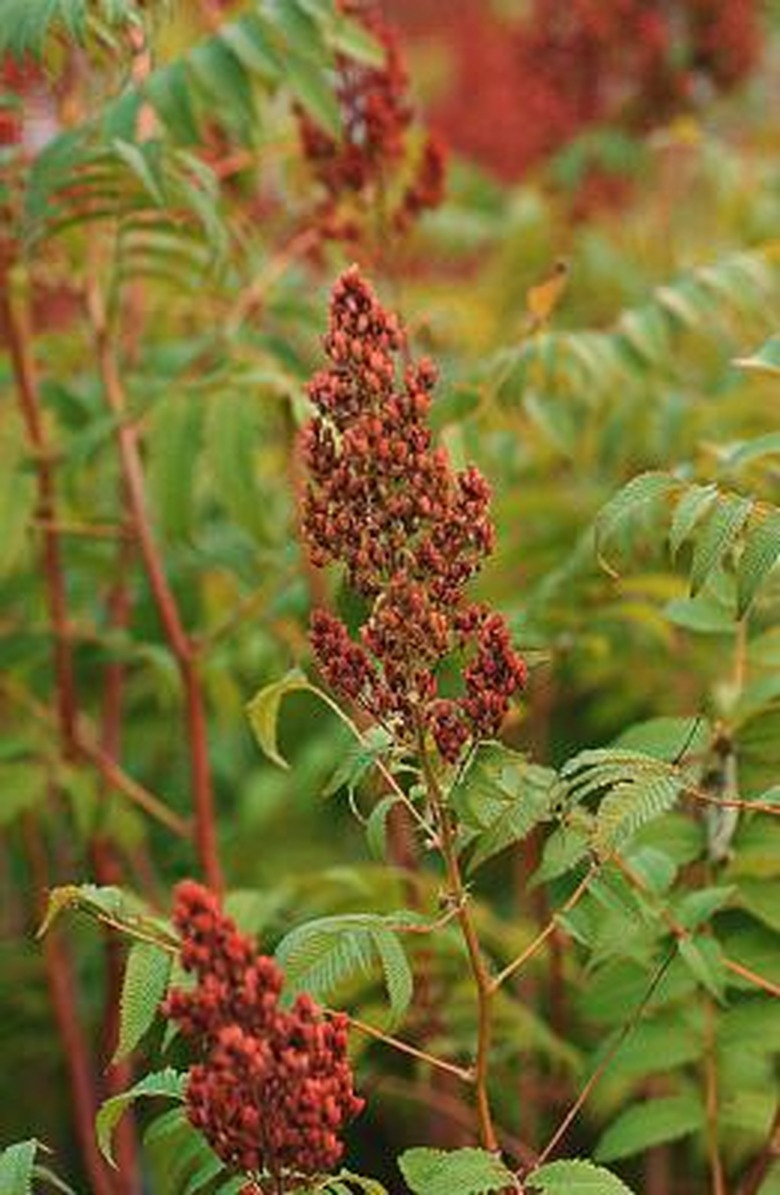Can I Burn Sumac Trees?
Sumac grows prolifically in many parts of the U.S. Staghorn and smooth sumac may be seen in landscapes, but are also found in woodlands and along roadsides. Burn sumac wood only if you are certain it is not poison sumac, and only under certain controlled circumstances.
Controlling Sumac
Smooth sumac, which is not toxic, grows wild in ravines, glens and prairies, in many parts of the U.S. It is a beneficial plant in some situations, providing homes for wildlife or preventing soil erosion. If the sumac becomes invasive, though, crowding out native plants, manage it through annual burns in the late summer, according to the Missouri Department of Conservation. Use carefully controlled burns to destroy the top growth. Cut down any suckers that appear. Use this method on level prairie surfaces and near natural bodies of water only. Do not use burns in ravines or other areas where controlling the fire would be difficult.
Sumac as Firewood
Sumac is a lightweight wood known for spitting, popping and throwing out embers. Use sumac trees for firewood, rather than shrubs, and allow it to season for at least one year prior to use. Sumac probably won't put out a lot of heat. Use it to start a fast-burning fire in combination with hard woods, which will generate more heat.
Poison Sumac
Poison sumac, like poison ivy and poison oak, contains uroshiol, a highly irritating substance that causes severe rashes. When burned, this substance is released into the air, and can cause severe lung irritation. Poison sumac is rare and grows in moist woodland areas or near streams. It is a shrub, rather than a tree, and has alternate pinnate leaves and reddish stalks.
Recommendations
Consult a local Department of Conservation before burning sumac on your land and positively identify any shrub sumacs before burning them. Use sumac as firewood to light fires or for fires early in the season, when a very hot fire is not required. Place a grate in front of the fireplace so embers don't escape, causing damage to the flooring or other surfaces.
